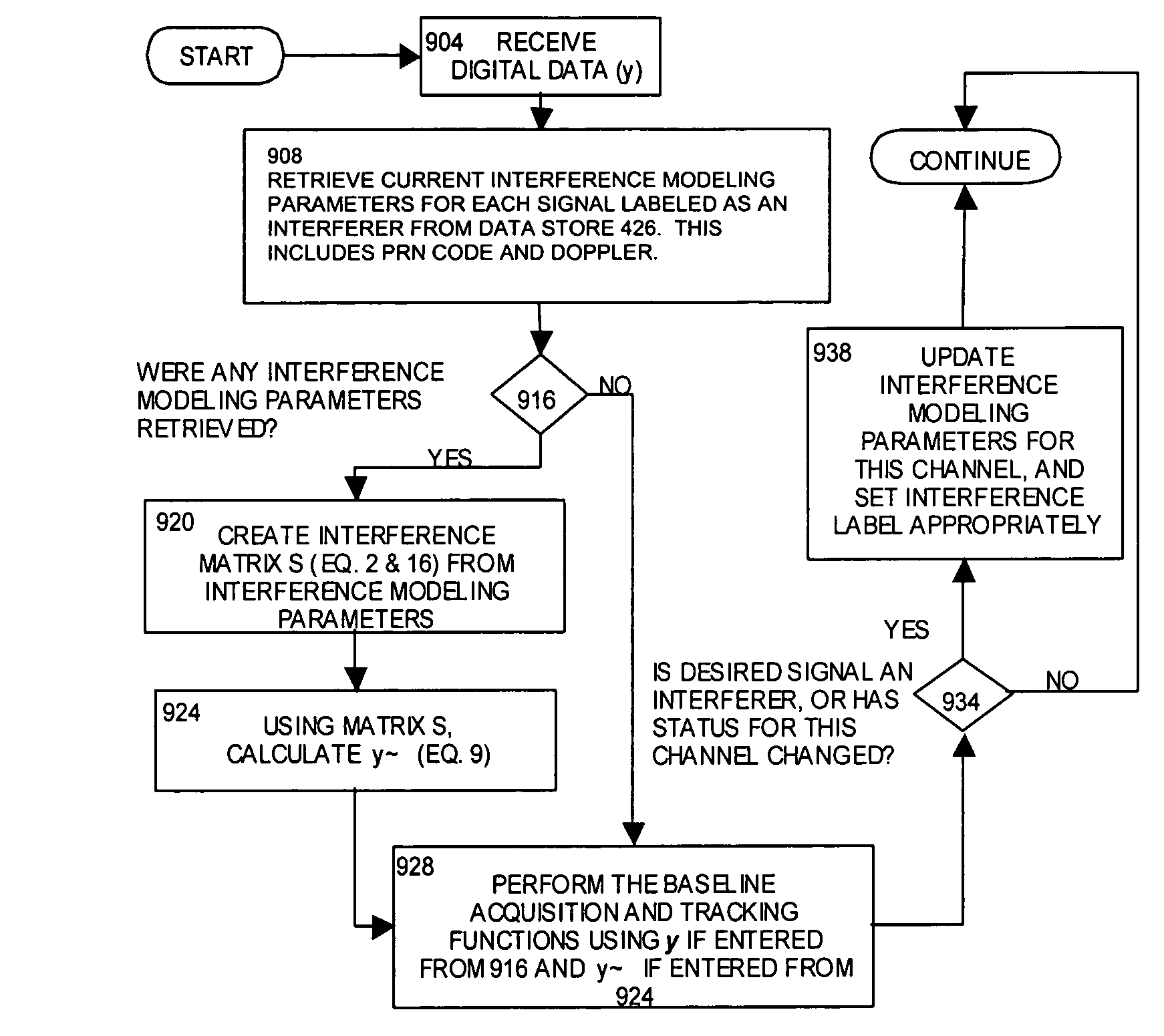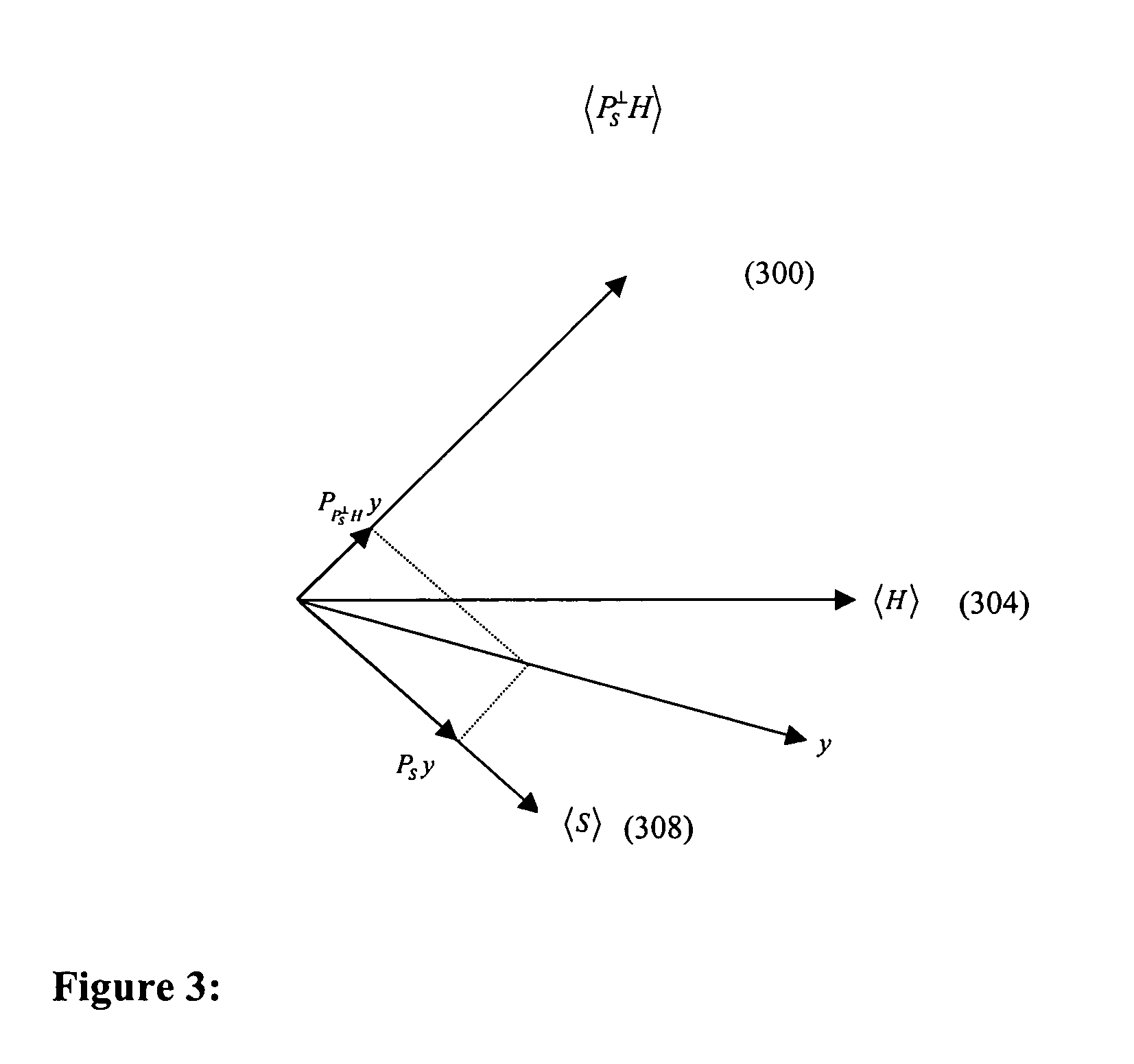Mitigating interference in a signal
a signal and interference technology, applied in the field of structured signal receivers, can solve the problems of preventing a receiver, degrading the performance, and adding additional interference into the gps spectrum, and achieve the effect of being more robust to interferen
- Summary
- Abstract
- Description
- Claims
- Application Information
AI Technical Summary
Benefits of technology
Problems solved by technology
Method used
Image
Examples
Embodiment Construction
Interference Mitigation Technique
[0111]Referring to the Wireless Signal Modeling description in the Terms and Definitions section above, Sharf and Friedlander (Sharf L. L., B. Friedlander, “Matched Subspace Detectors,” IEEE Trans Signal Proc SP-42:8, pp. 2146-2157, August 1994 incorporated fully herein by reference), showed that when the measurement noise variance is unknown, the uniformly most powerful (UMP) test for detecting contribution from H, while rejecting contributions from S is given by:
[0112]τ(y)=yTPGyyTPS⊥PG⊥PS⊥y(3)
where:[0113]τ(y) is the Generalized Likelihood Ratio Test (GLRT). That is, the test provided by τ(y) is for determining whether the signal H (i.e., the target signal) is part of the composite signal y. More specifically, the signal H is declared present in y if τ(y) exceeds some appropriately defined threshold.[0114]PS=S(STS)−1 ST is the orthogonal projection operator matrix that would take an input and project it onto the space spanned by the columns o...
PUM
 Login to View More
Login to View More Abstract
Description
Claims
Application Information
 Login to View More
Login to View More - R&D
- Intellectual Property
- Life Sciences
- Materials
- Tech Scout
- Unparalleled Data Quality
- Higher Quality Content
- 60% Fewer Hallucinations
Browse by: Latest US Patents, China's latest patents, Technical Efficacy Thesaurus, Application Domain, Technology Topic, Popular Technical Reports.
© 2025 PatSnap. All rights reserved.Legal|Privacy policy|Modern Slavery Act Transparency Statement|Sitemap|About US| Contact US: help@patsnap.com



